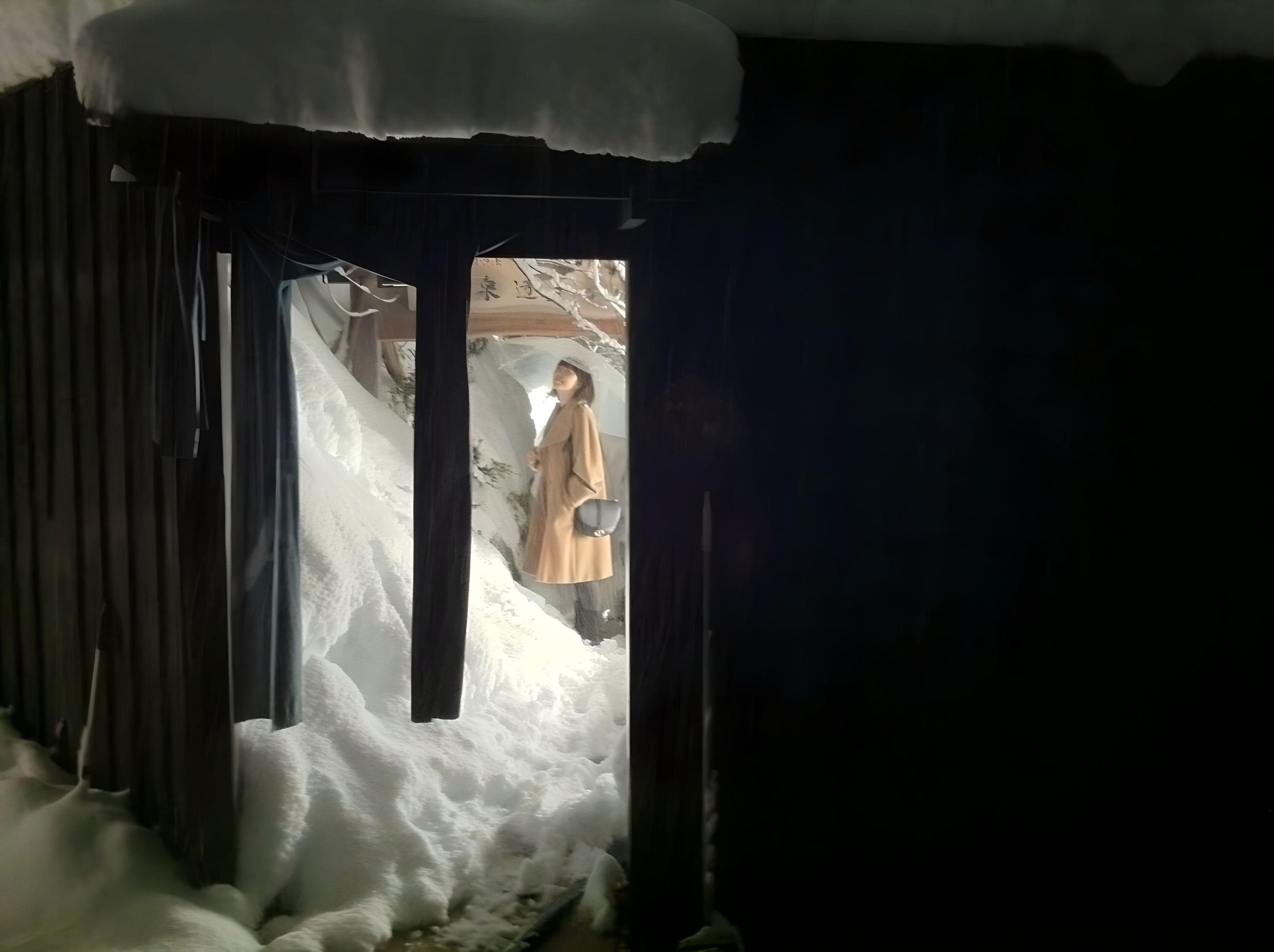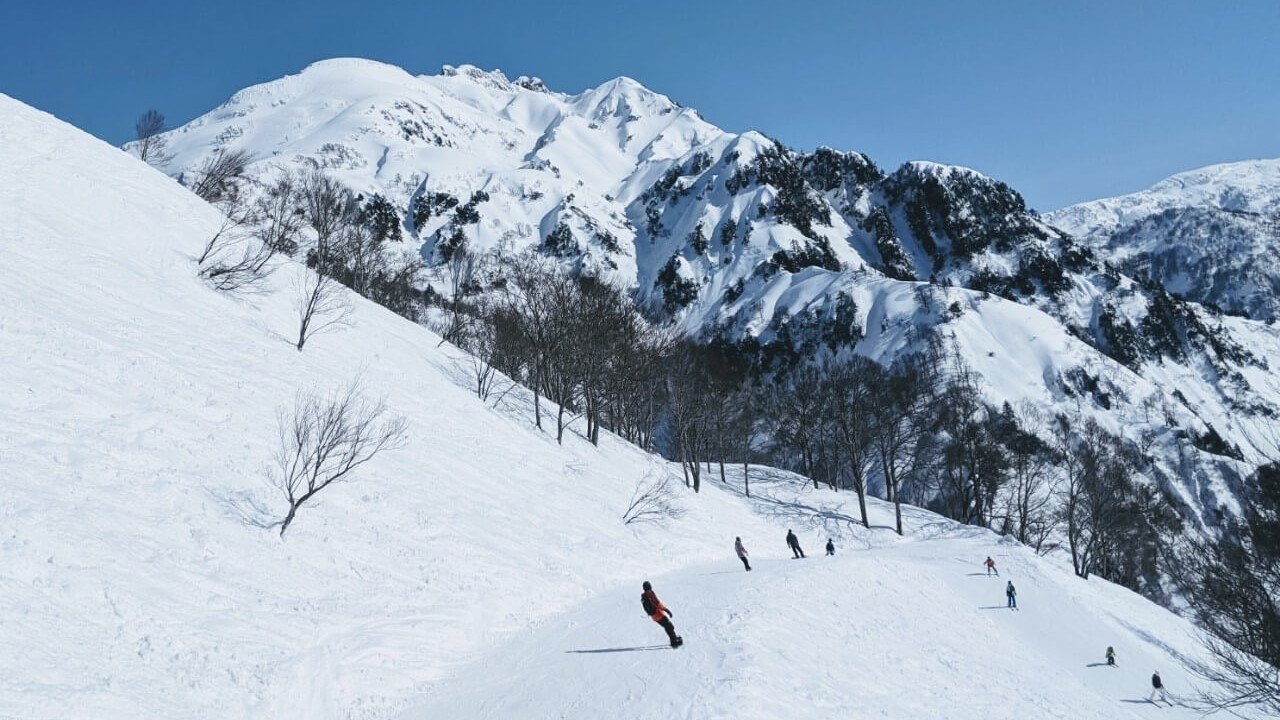In Episode 08 of Snow Country Stories Japan I delve a little deeper into what and where the snow country is, why I value it, why I think you should visit and my own story and the services I provide as a writer and guide based in Nagano. I also provide some basic information about how to get to the snow country. As discussed in the episode, the term ‘雪国 / yukiguni’ or ‘snow country’, refers to regions and areas of heavy snowfall and its broadest sense can be applied to just over half the Japanese landmass. To understand just why Japan receives so much snow, we have to talk about weather. Japan’s originates in China and Russia and blows a cold monsoon from the northwest. Due to high pressure in the west and low pressure in the east, cold air moves across the Sea of Japan and a warm water current called the Tsushima Current. The contact of the cold air and warm current create vapour which forms clouds, carried to Japan on the monsoon winds.
Snow Country Japan: Why I Value It, Why You Should Visit & What I Do Here
As the clouds move over the coast of Japan, they are quickly pushed up by mountains, and that moisture turns to snow. A lot of snow that is then dumped on four mountain ranges that run nearby the north coast. Snow is in no way limited to these mountain ranges or prefectures however it’s in these areas you are likely to experience the heaviest snow in Japan – which is claimed ranks among heaviest snowfall of any permanently inhabited parts of the world.
Yukiguni can be interpreted in different ways, to include or exclude specific areas, but most commonly references the prefectures of central and northern Honshu along the Sea of Japan. Some western prefectures, the northern island of Hokkaido and inland areas encompassing the North Alps of Nagano are also included under a broad definition of snow country. In its most refined usage, yukiguni refers to the prefectures of Niigata, Toyama and Fukui only. Coloured the darkest shade of blue on the map, these prefectures experience exceptionally heavy snow. Some areas of other inland prefectures – coloured the lightest shade of blue - are also classified as snow country, however without the entire prefecture carrying that designation.
Snow country is a broad consisting of many prefectures, localities and cities. It is a place in which over many centuries, the snow both made demands of the people that lived amongst it while also presenting opportunities, and through that interaction distinct traditions, industries and folklore developed. Yet it remains largely unknown outside of Japan. I want to help change. Best-known for its winters, the snow country is in truth a place of four seasons and home to most of Japan’s highest mountains, many of its most celebrated national parks, abundant farmlands nourished by the snowmelt, more liveable cities, liveable cities, historic towns and quaint villages, famous hot springs, ancient roads, temples and shrines and distinct traditions, industries and folklore all shaped by the deep snow of winter. A place of beauty, it often takes real effort to live here – indeed some people might think we are crazy to want to do so – but with that challenge comes a real sense of community, as people have to work together to live and thrive among the snow. This is why I value the snow country and this is why I think you should visit.
I call the snow country my home, working as a freelance guide and writer in Nagano. You can find more information about my services as a writer and services as a guide on this website, along with ‘My Story’ – in which I provide a little information about my background and motivations. I have been guiding in Japan for more than 6 years – mostly in and around Nagano Prefecture along with surrounding prefectures of Central Japan. The website lists my current tours. I design tours that provide guests with engaging experiences that are fun, well-paced and with the flexibility to suit your needs, interests and itinerary. As a foreign resident of Japan, I have a good understanding of what international visitors want from their experience in Japan and the knowledge base they typically bring with them. All tours are designed to suit the tastes of international visitors while providing a different perspective, a more compelling story and in the end, a more complete understanding of Japan. After all, I think much of what is said about Japan is tired, repetitious and in the end, not that accurate. I like to tell a different story.
Toward the end of the episode I provide some information about moving to, from and around the snow country including use of the Shinkansen / ‘Bullet Train’ network. If you plan to do so it’s worth considering the Japan Rail (JR) Pass as it can represent significant savings (depending on how often you plan to use the train) along with regional passes including the JR East Nagano & Niigata Pass, the Hokuriku Arch Pass, the JR East Tohoku Pass and Hokkaido Rail Passes.
I hope you enjoy.




